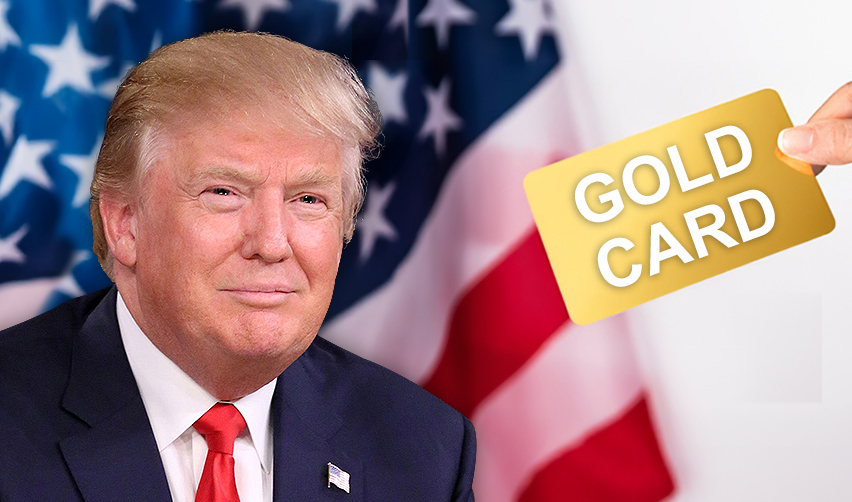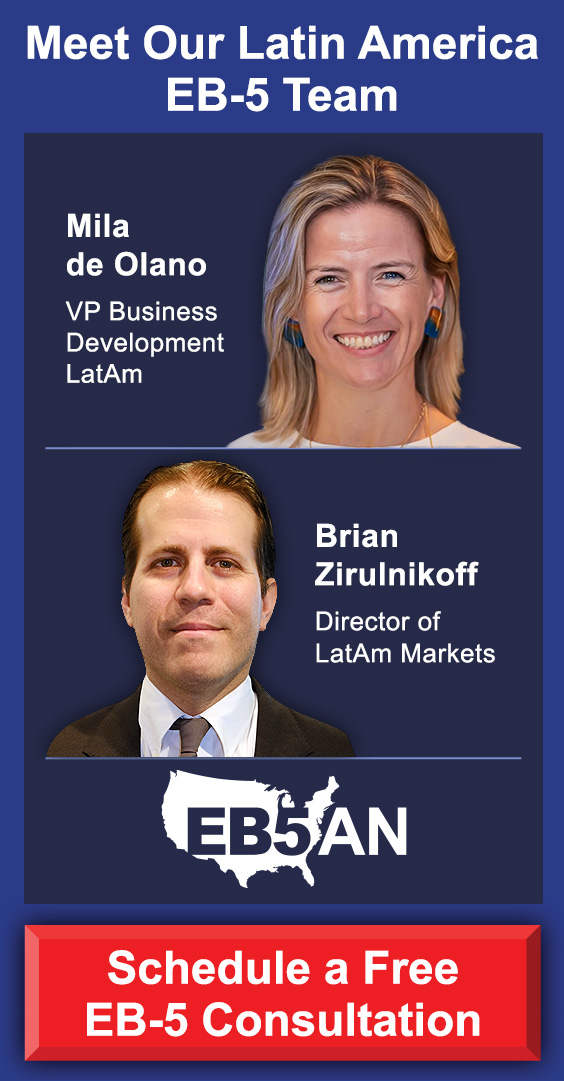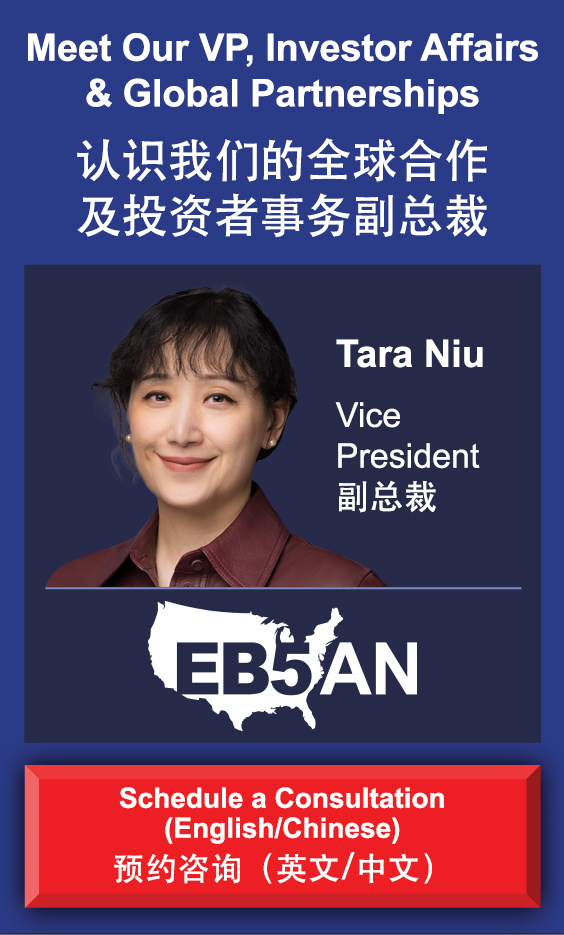On September 19, 2025, the Trump administration issued an executive order creating a new immigration category known as the “Gold Card.” Framed as a direct path to a Green Card for highly skilled professionals and entrepreneurs, the program has quickly become a subject of international interest. The measure is intended to expand access to U.S. Green Cards for wealthy foreign nationals, but the way it has been structured also creates significant limitations for certain applicants.
The executive order suggests that Gold Cards will be processed through the existing EB-1 and EB-2 employment-based categories. This means that the country limits under U.S. immigration law remain in place.
As a result, for applicants from countries with heavy visa demand—most notably India and China—the waiting times in these categories will still apply. In practice, the new card does not remove the long delays that investors from these countries continue to face.
It’s important to note that the Gold Card executive order has not removed or replaced the EB-5 program.
Instead, EB-5 remains one of the most viable options for Indian and Chinese nationals. Through rural EB-5 projects with priority processing, investors from oversubscribed countries can potentially gain their Green Cards in a few short months.
What is more, the minimum investment amount for EB-5 applicants is $800,000 if investing in a targeted employment area project—and investors can potentially recover this entire amount plus returns.
The Gold Card, meanwhile, requires a $1 million payment, with no recovery of the funds.
While the Gold Card may offer real advantages for applicants from countries without visa retrogression, EB-5 continues to provide the most reliable path for Chinese and Indian families seeking a more timely immigration solution.
In this post, we’ll analyze President Trump’s executive order, how the Gold Card will work, and how EB-5 fits into the new U.S. immigration landscape.
Trump’s New Gold Card Explained
The Gold Card Does Not Remove Backlogs for India and China
Gold Card Applicants Will Donate Funds, Not Make Investments
EB-5 Remains the Safest Option for Indian and Chinese Applicants
Planning Your Immigration Journey
Trump’s New Gold Card Explained
The executive order of September 19, 2025, establishes the Gold Card as a new visa pathway overseen by the Department of Commerce.
Under the order, an applicant may qualify by making “an unrestricted gift” to the Department of Commerce: $1 million for an individual or $2 million if contributed by a corporation on behalf of the applicant. These contributions are to be deposited in a special Treasury fund and used “to promote commerce and American industry.”
Most importantly for immigration purposes, the order directs the Departments of State and Homeland Security to treat the qualifying gift as evidence of eligibility for EB-1 priority worker status (under 8 U.S.C. §1153(b)(1)(A)) or for EB-2 advanced degree or exceptional ability status (under §1153(b)(2)(A)). The order also allows such applicants to be considered for a national interest waiver (under §1153(b)(2)(B)).
In effect, the Gold Card does not create a separate visa category. Instead, it provides an expedited process within the existing EB-1 and EB-2 categories. This is a crucial consideration for foreign nationals seeking to immigrate.
The relevant U.S. agencies (the Departments of State, Commerce, and Homeland Security) are instructed to implement the program within 90 days, including by establishing expedited adjudication procedures, application fees, and rules for corporate sponsorship transfers.
Significantly, the order states that implementation must remain “consistent with the limits on the numbers of visas specified in 8 U.S.C. 1151 et seq.” This means that per-country caps continue to apply, a point of particular consequence for Chinese and Indian nationals, whose categories already face extensive visa backlogs.
Legal experts widely expect the Gold Card program to provoke litigation. One major issue will be whether the executive branch has the authority to implement an immigration scheme that effectively rewrites eligibility requirements for immigration categories—especially EB-1 and EB-2—without action by Congress. Some legal experts maintain that, under the Immigration and Nationality Act (INA), only Congress can create or significantly modify immigrant visa categories.
Another likely basis for legal challenge is that the Gold Card may conflict with the constitutional separation of powers. Some analysts assert that by using an executive order to change how immigrants qualify for permanent residence— through large financial “gifts” rather than traditional criteria— the order pushes the boundaries of executive authority. Critics contend this could be seen as exceeding statutory authority because the INA specifies strict requirements for immigrant admission, visa caps, and country quotas.
Litigation could also focus on the details of implementation—how the agencies define “substantial benefit,” how they verify or adjudicate the unrestricted gifts, and whether due process and administrative procedures are followed.
If the rules are vague or the process appears arbitrary, courts may intervene. For example, the Gold Card program might violate the Administrative Procedure Act (APA) if the government fails to provide adequate notice, justification, or a chance for public comment.
The Gold Card Does Not Remove Backlogs for India and China
Again, Gold Card applicants will still be subject to yearly visa limits, including country quotas. Approval of an application does not guarantee a faster Green Card.
For Indian and Chinese nationals, the Gold Card offers little practical relief. Both EB-1 and EB-2 categories for these countries already face some of the longest backlogs in the immigration system. Because U.S. law limits each country to about 7% of the total visas issued each year, demand from India and China has far exceeded supply. The result has been waiting times that span many years, even after approval of the underlying petition.
The EB-2 backlog is especially large for India. With a cut-off date of December 1, 2013, as of the October 2025 Visa Bulletin, Indian nationals hoping to pursue an EB-2 visa could potentially have to wait even a decade or longer.
For Chinese nationals, the situation is less severe but still burdensome, with significant EB-2 delays.
This is why the Gold Card, despite its high profile, will likely be impractical for investors from India and China. The executive order may treat a financial gift as evidence of EB-1 or EB-2 eligibility, but it does not accelerate the Visa Bulletin. The cut-off dates will still advance slowly, often by only weeks or months at a time.
Families who make this gift will remain behind tens of thousands of other applicants from the same country, waiting for visa numbers to be released.
Gold Card Applicants Will Donate Funds, Not Make Investments
The financial structure of the Gold Card should also be considered.
The order requires the contribution to be an “unrestricted gift” to the Department of Commerce, deposited into a Treasury fund to promote American industry. It is not an investment, not a loan, and not recoverable. Once given, the money is gone.
For Indian and Chinese applicants facing decade-long waits, the prospect of paying $1 million without any short-term immigration benefits or long-term financial returns may not seem viable.
EB-5 Remains the Safest Option for Indian and Chinese Applicants
So, who stands to benefit from the new Gold Card program? Most likely, the Gold Card will be of most use to wealthy foreign nationals from countries with a low volume of immigrant petitions. Applicants from countries that have not been assigned cut-off dates and are not in danger of a backlog could receive their Green Cards within a reasonable period. And, unlike EB-5, their Green Cards will not depend on job creation, USCIS compliance, or other factors. Gold Card applicants essentially purchase their permanent residency.
But at the same time, Gold Card applicants will lose the entire $1 million “gift.”
In contrast, the EB-5 program allows investors of any nationality—including China and India—to gain their Green Cards quickly, potentially in a matter of months. With the set-aside visa categories and by investing in a rural project, investors could receive their Green Cards, and all of the benefits that come along with them, quickly.
EB5AN’s own investors have received I-526E approvals in as little as 6.5 months and their Green Cards in as fast as 9 months.
And EB-5 investors can recover both their $800,000 investment and even gain accrued returns—as long as they invest in a financially sound project. EB5AN investors across multiple projects have already received repayment along with returns.
EB-5 also provides immediate benefits for families already living in the United States on temporary visas such as H-1B. Once an EB-5 petition is filed, investors may immediately apply for adjustment of status, along with work and travel authorization.
Through adjustment of status, you could receive employment authorization documents (EADs) and advance parole (AP) documents within a matter of weeks, allowing you and your family to remain lawfully in the United States, continue working, and travel abroad while your EB-5 petitions are pending.
EB5AN investors have received EADs and APs in as little as 33 days.
The Gold Card offers no comparable path: It does not create a new adjustment process, nor does it provide interim benefits such as work authorization. For Indian and Chinese nationals in particular, this is an important point—EB-5 offers real, usable benefits from the start, while the Gold Card does not grant any immediate ability to live and work in the United States.
Planning Your Immigration Journey
If you are from a country without a backlog of U.S. visa petitions—and are able to pay $1 million without recovering the funds—the Gold Card could be a viable option. Still, all foreign nationals should wait and see the specifics of how the program is implemented and be on the lookout for legal challenges.
But Chinese and Indian nationals—as well as any applicant who already lives in the U.S.—should continue to consider EB-5 for its immediate immigration benefits and path to fast Green Cards, regardless of nationality. And one of the first steps of your EB-5 journey entails partnering with a trusted and experienced regional center.
has helped more than 2,700 families from 70+ countries become lawful permanent residents of the United States. Our expert team has more than a decade of experience, and we offer clients first-rate, low-risk EB-5 regional center projects with a 100% USCIS project approval rate.
For personalized guidance on crafting the right immigration plan for yourself and your family, schedule a free consultation with EB5AN.







